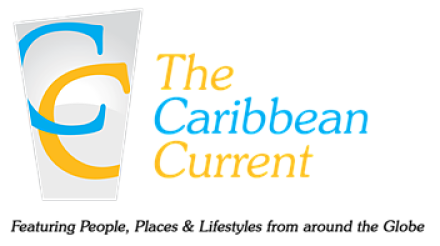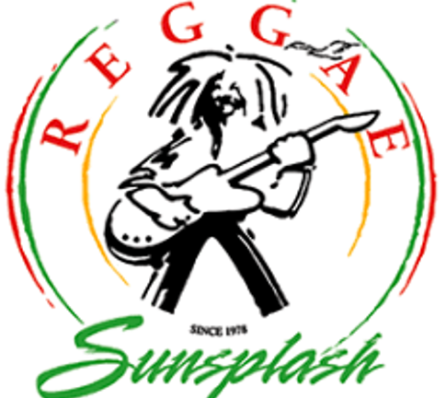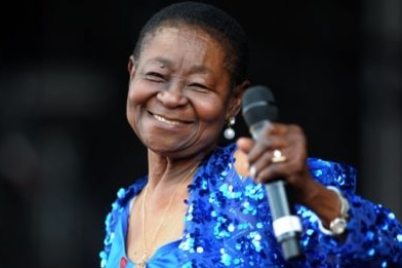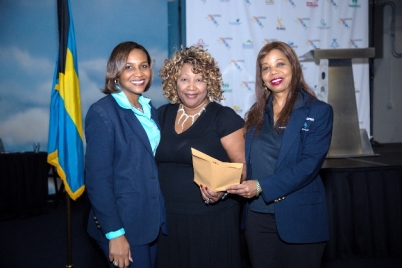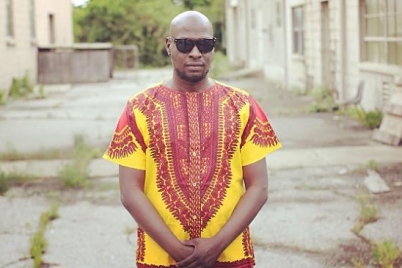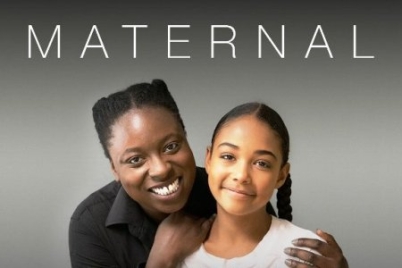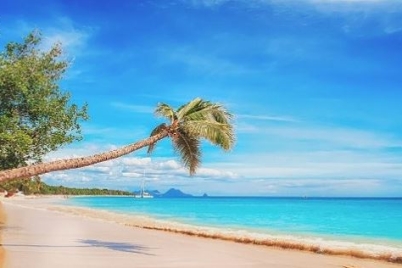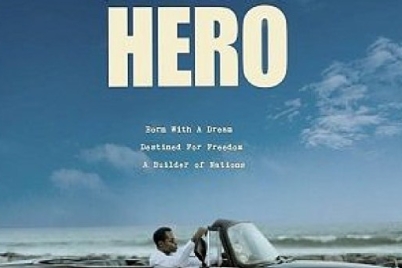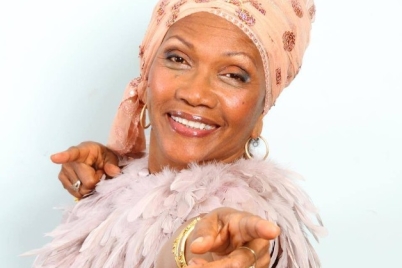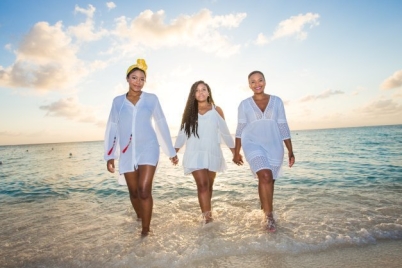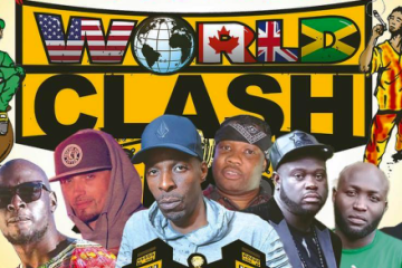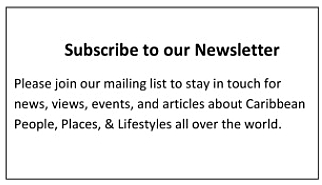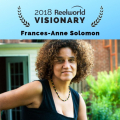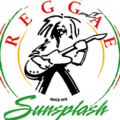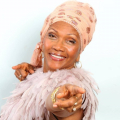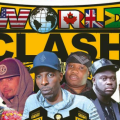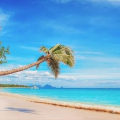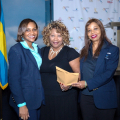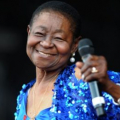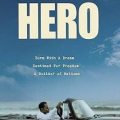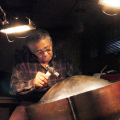The birth of Jamaican Music Festivals
Mission Tourism
Reggae Sunsplash was introduced in 1978 as a means of building summer tourism in Jamaica. Traditionally, Jamaica’s tourism had been marketed as a winter product; as a result, the summer months saw low occupancy in the island’s hotels and guesthouses. The tourist season traditionally runs from December 15 to April 15 and, up to the 1960s, hotels closed or went to skeleton staff during the summer months, considered “low season”. This was the time when hotels opted to do major refurbishing or maintenance work.
As tourism presented itself as one of the pillars of the Jamaican economy, tourism officials took stock of the industry and determined that the summer trough had to be ironed out. It was not okay for staff to be laid off every summer and hotels close, for lack of clientele, simply because the island had traditionally been promoted as a winter destination. The economy demanded a higher level of employment in the industry, given its clear potential.
In the late 1970s, the Jamaica Tourist Board (JTB) presented Jamaica’s public relations agency of the day, Peter Martin Associates, based in New York, with a major challenge. Fill the summer trough. Make tourism happen in the traditional low season.
Peter Martin, Principal of the agency reasoned: “What is hot? Music!“ At the time, disco fever was raging and reggae was just beginning to emerge as a force in the music world. Initially, Peter Martin wanted his proposed music festival to be called “The greatest reggae and disco festival in the history of the world” – a clearly unmarketable name, but the germ of the idea was planted, and the consensus was that the emphasis should be on reggae since this genre was indigenous to Jamaica.
The combination of tourism and reggae was a curiously natural though contentious fit, for while reggae music was making waves internationally, many Jamaicans were still not comfortable with it because it spoke to the social and economic conditions in the island, which did not favour a large proportion of the population. Middle-class Jamaicans did not embrace reggae music. Moreover, while the music was making waves internationally, the average visitor to the land of reggae’s birth had little exposure to the sound.
The roots of Jamaica’s Tourism
Rafting on the Rio Grande – (Photo Carey Chen) – The Rio Grande is a river of Jamaica, found in the parish of Portland. It was named when the Spanish occupied Jamaica in the 15th and 16th centuries. One of the largest rivers in Jamaica, it was named “Big River” by the Spanish, and today is one of the many tourist attractions in Portland, mainly for rafting.
Jamaica’s tourism started in the late 1890s, with the coming of visitors to Portland on banana boats owned by the United Fruit Company. Lorenzo Baker, head of United Fruit Company is credited with bringing the first tourists to Port Antonio, then the hub of the banana trade. Baker’s boats largely plied the route between Jamaica, Boston, and Philadelphia. The boats were outfitted to carry Americans to the warm Caribbean destination during frigid winter months. The tourist trade gradually took wings.
Who’s Who in Jamaica notes that Lorenzo Baker, “Materially assisted in bringing tourists to the island. About 30 steamers with a total average tonnage of 20,000, each capable of carrying upwards of 50 passengers, reached Port Antonio every week from Boston, Philadelphia, Baltimore or New York”.
Recognizing the potential of tourism, Baker decided to build a hotel in Port Antonio on Jamaica’s north-east coast. He selected as the site Titchfield Hill, which has a commanding view of sea and land. Jamaica’s first hotel was thus the Titchfield Hotel, but it was not far removed from a boarding house – nothing of the image which the word “hotel” conjures today.
A major international exposition in the capital city, Kingston, called The Jamaica International Exhibition, which took place in the early 1890s, is what really gave tourism a serious kick start. The promoters of the exhibition saw it as a catalyst for the development of a meaningful tourist industry which, up to then, held a very minor position in Jamaica’s economy. The hope was that the exposition would open the eyes of both foreign investors and locals to the vast potential of the industry. However, the island did not have suitable accommodation for the hoped-for investors. Out of this realization emerged the need to build a number of hotels; thus was born such impressive properties as the Myrtle Bank Hotel on Harbour Street in downtown Kingston which was close to shipping piers, the South Camp Hotel on South Camp Road, and the Constant Spring Hotel, later to be converted to the Immaculate Conception High School for Girls. All of these were located in Kingston. All of these early hotels have ceased to exist as guest accommodation.
Montego Bay was to see the next step towards the establishment of a tourist industry, and today, it lays claim to being the cradle of Jamaica’s tourism. The first tourists are said to have come to MoBay, as it is called by locals, in 1920. The magnet was the clear azure waters of Doctor’s Cave Beach, which, it was claimed, have healing properties because mineral springs were reputed to empty their waters into the ocean at that point. The first hotel was built in 1924, and the industry has been growing from strength to strength since then.
Today, tourism is the focus of life in Montego Bay, driven by the allure of its white-sand beaches and breathtaking scenery. This industry has taken root all over the island, to include Ocho Rios and surrounding communities from Oracabessa to Discovery Bay, Negril, and parts of the island’s south-west coast. However, over the years, the industry has remained very much as it had started, a winter product.
The marriage of Reggae Music and Tourism
Doctors Cave Beach in Montego Bay, Jamaica (photo – By en:User:Op. Deo – http://en.wikipedia.org/wiki/Image:Doctors-Cave-Beach.jpg, Public Domain, https://commons.wikimedia.org/w/index.php?
Reggae music grew out of an era when the “rude boy” culture was king among inner-city youth. Street violence was at its height in western Kingston, the cradle of reggae. Singers were celebrating the exploits of the worst street gangs. The music developed and thrived, drawing on the experiences of the poor and underprivileged. At that time, music was riding high on the agenda of the young and adventurous all over the world. John Travolta was the dean of disco, and disco was the in dance.
Another force was also gathering Reggae music. Singers like Desmond Dekker and the Aces and Toots and the Maytals had emerged and their music had found itself beyond Jamaica’s shores. Bob Marley and the Wailers had burst on the music scene, in the company of lyrical luminaries like Jimmy Cliff, Third World, and Inner Circle. Reggae music was meandering its way through Europe, Africa, Asia, and the Pacific. When the music gained popularity outside of Jamaica, the island’s musical strength gained international exposure. In 1969, you could walk through the streets of Munich and hear Desmond Decker’s “The Israelites”.
The marriage of reggae and tourism was a curiously natural fit, and it took a North American public relations man to see the possibilities that conjoining of the two could yield.
I was the Jamaica-based representative for Peter Martin Associates. Once he got the attention of the Jamaica Tourist Board, Peter said, “Berl, go and make it happen.” He got on the plane and left for New York, and I was left with this major project on my hands.
Never had I taken on anything of this magnitude. I recalled that Tommy Cowan was the leading music promoter of the day. When I approached him, Tommy liked the idea but declined to mount a major festival – quite willing though he was to produce it. No go. The Tourist Board was looking for someone to produce the Festival, which the Board would promote as part of the tourism product.
I next approached another prominent promoter, Ed Wallace, with the same result as before.
I recalled that I had worked at the Urban Development Corporation with a man called Tony Johnson, who had recently returned from Los Angeles. Tony had forever been talking about how under-promoted Jamaican music was, and how the country could make much money out of this resource. I said to him: “Tony, are you willing to put your money where your mouth is?” He did not hesitate.
“ Yes. I will do it.” I advised him to put together a package and bring it to me, so I could submit it to the Tourist Board.
In short order, Tony returned with his group of associates – Synergy – made up of Ronnie Burke, Don Green, Don Wakeling and himself.
Tony, Synergy’s Managing Director was an Urban Planning Project Manager. He had lived and studied in North America for many years before returning home in 1975, at a time when many Jamaicans were leaving the island. His aim, on returning to the island, was to marshal all of his talents towards a positive projection of the country.
Ronnie Burke, Synergy’s Director of Sales, had been a highly successful insurance sales representative for Life of Jamaica Insurance Company before leaving the business in 1973 to involve himself in record production, promotion, distribution and artiste management. He was a partner in Micron Music Limited.
Don Green, a Systems Analyst, functioned as Synergy’s Director of Operations and Company Secretary. Like Tony Johnson, he lived and studied in North America for several years before returning to Jamaica in 1976, at a time of great economic turmoil.
John Wakeling was Synergy’s Promotions and Production Director. Educated in England, he returned to Jamaica in 1966, joining the Jamaica Broadcasting Corporation as an announcer and talk show host. He was also engaged in the entertainment and tourism industries, working for the Jamaica Hilton Hotel and the Jamaica Tourist Board.
The four came together in January 1978 and, once Reggae Sunsplash got the green light from the Jamaica Tourist Board, they met night after night and throughout weekends to put their package together. The men of Synergy tossed the concept back and forth, pulling it apart and putting it back together in a fresh form. It was refined and polished until they felt confident enough to take the package to the Jamaica Tourist Board.
At first, the Ministry of Tourism was resistant, not fully convinced of the pulling power of reggae music. Desmond Henry was Director of Tourism at the time, with Barbara Gloudon as Deputy Director. Together, they pushed the new concept of promoting Jamaica through its music and finally won over the then Minister of Tourism, Jack Stephenson. We had a product. Now we had to find a marketable name. Peter Martin’s idea of calling it “The Biggest Reggae and Disco Festival in the History of the World”, did not find favour, as it was considered to be too unwieldy and wordy a name, not readily marketable. Further, the decision had been taken by the joint JTB and Synergy planning team that disco would be dropped from the mix, as it was not part of Jamaica’s culture.
We sat around the board table of the Jamaica Tourist Board one Saturday morning tossing names around. I reflected on what we were really selling…not just music. We were selling an experience. All of Montego Bay was supposed to hum throughout the period of the festival. This would not be just a show. It was music. It was sand and sea. It was fun. It was exhilaration. It was grooving on the best of reggae music, soaking up the sun and splashing in the sea.
I pondered all of this, and then the name came.
I shouted. “I’ve got it. Reggae Sunsplash !!” The name immediately resonated with the group and it has since spawned many variations, including Japan Splash and Rototom Sunsplash in Spain.
So strong was the imagery evoked that, when Barbara Gloudon called on the then creative director for the JTB, a German man called Werner Starzman for a design. He dashed out of her office and, within half an hour, returned with what became the world-famous logo for Reggae Sunsplash—the stick-man dread with the jaunty guitar.
The message from Synergy was clear: “Our intention is to build an entertainment industry. We can only hope that other producers will step forward as catalysts toward achieving the spiritual and economic potential inherent in our music”, said Tony Johnson. “ We believe reggae can play a vital role in helping to revive the island’s economy, and we will seek to use this cooperation between the Government and the private sector to take reggae to a new dimension. We want to prove that Jamaican entertainment, professionally produced, can be a prime foreign exchange earner for our country.”
Explaining their reason for taking on the challenge of pioneering in the business of staging a reggae music festival, Tony said, “We felt there was a need for a spontaneous, cultural coming together, vis-à-vis, a festival. Independence, in August, was more a celebration of national attainment and nationhood but didn’t have the spontaneity of a cultural outburst. Reggae music reflects the spiritual and cultural aspects of our people, and through it all, other aspects of our culture come out. We established Synergy to have something totally indigenous. We also wanted to show that reggae music had international appeal. The music industry had been grossly overlooked. We liked Montego Bay because of the ambiance and the number of hotel rooms in the city he said. Our most important objective is to demonstrate that music is a really powerful attraction. We are hoping to get the tourists to see and know Jamaica in its natural state.”
Echoing Tony’s sentiments, Don Green mentioned meeting Tony Johnson in Jamaica, after both had returned home from years of studying and working in the United States, and both shared the common conviction that reggae music had unfulfilled potential.
Don said, “I found that not enough reggae was being played on the air down here, and I had a genuine belief that reggae, as music, was above average and different from anything else in the world, not only in the pulsating rhythm but also in the message. Living in the States for so long and knowing the kind of impact a music festival could have in an environment like Jamaica, Tony and I went over and over the idea and thought we could create a festival that could rival Trinidad’s Carnival.”
He continued, “We contacted Ronnie Burke, who was already involved in the music business. He introduced us to John Wakeling and we became partners to stage the first festival. Ronnie’s experience was perfect for the job at hand. I know virtually all the artistes and have a good relationship with them, and I came into Sunsplash doing that end of things. John was primarily responsible for the technical aspects of Reggae Sunsplash, and also started out as MC for the shows, since the group could not afford to hire one.”
Having overcome the skepticism of tourism officials, Synergy had to face the naysayers among their friends and family.
“It can’t work,” the wise ones counseled when the four young men announced their intention to stage an annual reggae music festival.
“Reggae is a wave,” others said. “You can’t build an annual music festival on a fad.”
“It will work,” Synergy insisted. “Reggae is catching on all over.”
Besides, they argued, there was a home-based market for a good, strong package of reggae music. They felt they could rely on local support, even if the promised tourists didn’t show in large numbers. Their faith was to prove well-founded.
Synergy’s package was introduced as a week-long Montego Bay music festival, running from June 23 to June 30, 1978, six months after the group came together. The original thought was that the festival was to be more than night-time music shows. There would be beach parties, street-side stalls, music in the streets throughout the day. As Jimmy Cliff promised: “All MoBay will shake!”
Reggae Sunsplash Takes the Stage
Bursting on the stage on June 23, 1978, Reggae Sunsplash marked the advent of music festivals in the Caribbean and the promotion of the tourism product through music; it has since had many children and grandchildren.
This first show was held at Jarrett Park in Montego Bay, which proved to be a totally unsuitable venue because of the relatively low perimeter fencing which could be, and was, easily scaled.
The first Reggae Sunsplash was an exercise in sheer bravery for the Synergy team.
Totally lacking in experience in staging a festival of this magnitude, and without the requisite capital, they improvised as best they could. They put on a show in a venue that was really an undeveloped football field, with no amenities, not even adequate sanitary facilities. In those days, Jamaica had no facilities for outdoor concerts. Jarrett Park had no outdoor lights, no public address system. The Synergy team borrowed a stage from the army and paired it with a stage borrowed from the Kingston and St. Andrew Corporation, the capital city’s municipal body. There were no two-way radios, no cellular phones or the Internet. They communicated via the CB club. They had one radio at stage side, one at the gate, and one at the hotel which served as their base. They borrowed a follow spotlight from the Jamaica Defence Force, which did not work. On top of all that, the team had no technical staff. They relied on their own devices and the goodwill of friends.
As the music drifted over the city of Montego Bay, Jarrett Park was a magnet for scores of Montegonians who had no intention of paying at the gate. They swarmed over the fence, while Tony Johnson raced around the field, flapping his arms and shouting “Get back!, Get back” until he was hoarse, but the masses would not be moved. They kept on pouring over the fence. The story goes that one woman scaled the fence and landed in a pot of soup which was cooking alongside the perimeter fence.
Surprisingly, loyal reggae fans from such distant places as Australia and Japan and Sweden had heard of the festival and they were among the witnesses to the birth of Sunsplash.
While those who attended the first Reggae Sunsplash agreed that they had never before seen such a feast of reggae music, financially, it was a disaster for Synergy. The guys had gone into the venture pledging their personal assets. Their nemesis was lack of experience, for which they would pay dearly. They ended up losing their vehicles and other assets, coming out of that first Sunsplash.
They were hurt and discouraged by the reaction of the local press. They were clear that they had delivered the festival that they promised. One newspaper carried a headline “Reggae Suncon”, over a harshly critical story that questioned the credibility of the Synergy team. With the large crowds, the assumption was that these guys were raking in money, and the truth of Synergy’s plight was never believed by the media, which influenced most Jamaicans to hold a similar view.
The men of Synergy were advised by family, friends, business associates, and well-wishers to abandon the project. However, as Ronnie Burke described it, Reggae Sunsplash was to them a “diamond in the rough”. They were determined to make a success of the venture and so they ploughed on. Their faith was not in vain. They had pressed a hot button that would resonate throughout the entire musically aware world, and it was clear that they had to press on.
The initial festival brought journalists from such far-flung places as Ethiopia, Australia, and Japan. For the most part, musicians were ill-prepared for promotion, and the staff of the public relations agency, Peter Martin Associates, spent much time putting together biographical information on performers. The agency called a press conference and facilitated journalists to interview artistes, all of which would help spread the word to the world of the celebration of reggae in Jamaica, the home of reggae music. Thereafter, press conferences would be a feature of every staging of the music festival. There was always a press conference in advance of the first show, and another at the end, where journalists could ask questions arising from their experience. The first press conference introduced journalists to the arrangement for media at the shows and allowed them an opportunity to indicate which artistes they wished to interview.
By Berl Francis
About Berl Francis
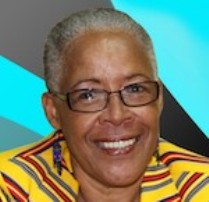 Berl Francis is one of the foremost business communication specialists in Jamaica, with over 40 years’ experience in the fields of public relations and journalism. She has also worked in Canada, the U. S. A, Thailand, Geneva, and a number of other Caribbean islands.
Berl Francis is one of the foremost business communication specialists in Jamaica, with over 40 years’ experience in the fields of public relations and journalism. She has also worked in Canada, the U. S. A, Thailand, Geneva, and a number of other Caribbean islands.
A former Vice President of Peter Martin Associates Public Relations, New York, Mrs. Francis was instrumental in promoting Jamaica in the USA & Canada during the 1970s. She also worked with Burson Marsteller, another public relations company in New York. With a background in journalism (Feature Writer and Assistant Lifestyles Section Editor of the Montreal Gazette in Canada; Sub-Editor at the Gleaner Company Ltd in Jamaica), Mrs. Francis has lectured in Public Relations at the Caribbean Institute of Media and Communication and was a visiting lecturer at Webster University School of Communication, St. Louis, Missouri, USA and Bangkok, Thailand. She has also been a tutor in an online Masters in Communication programme offered by Webster. She holds a Master of Arts Degree in Communication Studies from the University of the West Indies and a Bachelor of Science Degree in Sociology, also from UWI.
Mrs. Francis is a past District Director and member of the International Board of the International Association of Business Communicators, Eastern Canada, and the Caribbean and a past President of the Public Relations Society of Jamaica.
Her awards include Public Relations Society of Jamaica ‘s Award of Excellence for Communication Management (1997 and 2000); Media Award for Excellence in Health Communication (Jamaica); Pan American Health Organization – 1997; Caribbean Media Award for Excellence in Health Communication (Regional); IABC (Canada) Silver Leaf Award for Excellence in Communication Management (1997); Convent of Mercy Academy “Alpha” – Woman of Excellence Award (1998); Peer Awards Public Relations Personality of the Year (1999 and 2000); IABC Pioneer in Public Relations (Jamaica) (2007).
